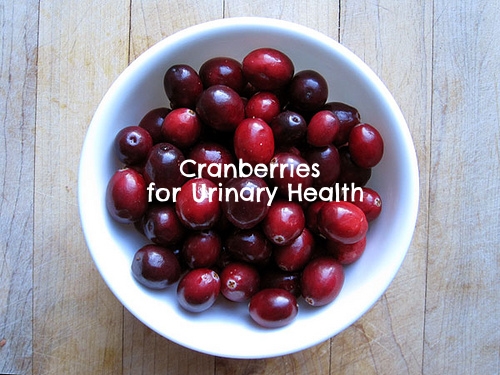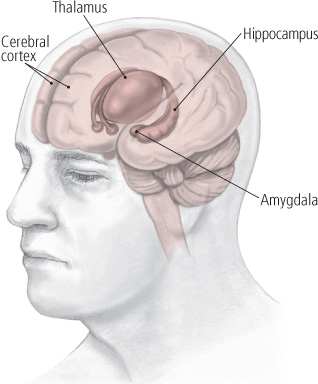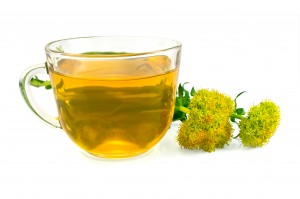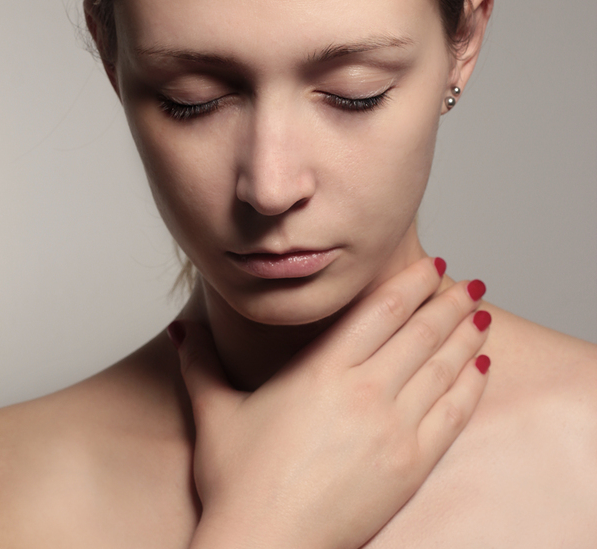
Cranberry & UTI
By Gene Bruno, MS, MHS – Dean of Academics, Huntington College of Health Sciences
Urinary tract infections (UTI) are no fun— especially for women who are...
By Gene Bruno, MS, MHS

Are you depressed? If so, you’re not the only one. In fact, approximately 20.9 million American adults have a mood disorder, and approximately 14.8 million experience major depressions1; the primary cause of disability in the U.S. for ages 15- 44.2 Another 3.3 million Americans suffer from chronic, mild depression.3
The predominant chemical, or biological, theory of depression suggests this it is caused by a decrease in the brain chemicals norepinephrine (NE), dopamine (DA) and/or serotonin (5-HT).4 In fact, conventional medical treatment uses antidepressant drugs which can increase the amounts of these brain chemicals by blocking their breakdown or exit from the body. Prozac, for example, blocks the breakdown of serotonin. Another conventional medical treatment is psychological counseling, which considers one of the causes of depression to involve familial associations and/or other relationship problems or life circumstances. Most modern theorists would agree that both biological and psychological factors play a role.5
In addition to conventional treatment for depression, some complementary and alternative treatments also have value. This includes exercise, massage therapy, relaxation therapy6, as well as dietary supplement therapy. Following is a review of select dietary supplements which have been found to have value in treatment of depression and enhancing mood; although these are not the only such supplements which have been successfully used for this purpose.
St. John’s Wort (Hypericum perforatum) is probably the best known of the dietary supplement ingredients that helpful for mild to moderate depression. St. John’s Wort has been used as medicine since the middle ages. Today it is enjoying a resurgence of interest because of its marked influence on depression. The clinical evidence is overwhelming in favor of St. John’s Wort Extract as a relatively risk free antidepressant which is suited for the treatment of mild to moderate depression.In one study, after 4-6 weeks, all patients showed a measurable improvement in anxiety, mood, loss of interest, and more than one-half dozen other psychometric measurements.7 Similar results were seen inother studies.8
Research on St. John’s Wort extract is so extensive, that it has been endorsed by the German government’s ‘Commission E’ asindicated for impaired consciousness, depressive states, fear, and nervous disturbances.9 There have been many evaluation studies comparing St. John’s Wort to both a placebo, and various anti- depressant pharmaceuticals. Not only have these studies validated St. John’s Wort over placebos, they have demonstrated a therapeutic advantage over the prescribed drugs.10 And, occurrence and severity of side effects with Hypericum extracts are clinically insignificant, especially when compared to those of the pharmaceutical counterparts. For example, in one study comparing Hypericum to fluoxetine (Prosac®) for mild to moderate depression, the researchers concluded, “When treating patients with mild to moderate depression, hypericum should be considered as one of the first treatment options basd upon both efficacy and safety, particularly in cases where treatment is a choice between fluoxetine and hypericum.”11
There is some debate over which is the active ingredient in St. John’s Wort, hypericin or hyperforin.12 In any case, a primary mechanism of action seems to be that it increases serotonin levels, much by the same mechanism of action that Prozac® exerts.13 Serotonin is a neurotransmitter which is often found in inadequate levels in depressed individuals. More recent research also indicated that St. John’s Wort may increase some aspects of brain dopamine function in humans.14 Like serotonin, dopamine is also a neurotransmitter which is often found in inadequate levels in depressed individuals. Until the argument is settled, it is probably best to use a St. John’s Wort product that is standardized for both its hypericin and hyperforin content. The current dosage recommendation for St. John’s Wort is three capsules daily if you’re using at least 300 mg of the extract standardized for 0.3% hypericin. If you want to emulate the hyperforin research, however, you need 45 mg of hyperforin daily, which translates into 5 capsules of a similar extract standardized for 3% hyperforin.
DL-phenylalanine or DLPA is a mixture of the essential amino acid L-phenylalanine and its mirror image, D-phenylalanine. D- phenylalanine has been shown to increase tolerance to pain in animal research by blocking the enzymatic breakdown of pain- relieving chemicals in the body.15 DLPA (or the D- or L- form alone) reduced depression in 31 of 40 people in a preliminary trial.16 Some physicians suggest a large daily dose of 3–4 grams of DLPA for people with depression, while some researchers have found that much lower doses of 75–200 mg per day were helpful.17 In one double-blind trial, depressed people given 150–200 mg of DLPA per day experienced results comparable to that produced by an antidepressant drug.18

For centuries, Rhodiola rosea has been used in the traditional medicine of Russia, Scandinavia, and other countries to treat fatigue, depression, impotence and nervous system disorders, while increasing physical endurance and work productivity.19
Modern scientific studies in cell cultures, animals, and humans have revealed anti- fatigue, anti-stress, anti-hypoxia (protection against damaging effects of oxygen deprivation), antioxidant, immune enhancing and sexual stimulating effects.20 21 22 23 24 25 Of particular note are Rhodiola’s anti-fatigue and performance enhancing properties. A number of studies have shown that Rhodiola increased physical work capacity and dramatically shortened the recovery time between bouts of high intensity exercise.26 Other current and evidence based uses of Rhodiola include, but are not limited to feelings of well-being and mental performance.27
In one study, a specific Rhodiola extract given in doses of 50 mg twice daily reduced mental fatigue and improved subjective well-being in students during an examination period.28 In another study, taking 170 mg daily of the same standardized Rhodiola extract seemed to reduce feelings of fatigue and improve mental performance in night shift workers.29
The psychostimulant effects of Rhodiola, 50 mg three times a day, were studied in 53 healthy subjects and 412 patients with neuroses and asthenic syndromes (fatigue, decline in work capacity, trouble falling asleep, poor appetite, irritability, and headaches).30 31 32 Rhodiola alleviated fatigue, irritability, distractibility, headache, weakness and other vegetative symptoms in 64 percent of cases.33
Rhodiola’s diverse effects may be partially explained by the fact that Rhodiola is an adaptogen.34 This means that it contains natural bioactive compounds having the ability to increase a human’s resistance to different stress-related disorders, and help to normalize body functions. These bioactive compounds have been determined to be rosavins, and possibly salidroside.35 A standardization of about 3% rosavins (as rosavin, rosin, rosarin) and 0.9% salidroside should assure maximum activity.
There is no simple, all-inclusive answer to treating depression. However, working with a qualified health care professional to modulate levels of NE, DA and 5-HT with pharmaceuticals and/or dietary supplements can make a profound difference in many individuals.
Smart Supplementation™ is a free series of educational literature created by Huntington College of Health Sciences (HCHS) as a public service. Although copyrighted, it may be freely photocopied and distributed, but may not be altered in any way. Smart Supplementation™ is not intended as medical advice. For diagnosis and treatment of any medical condition, consult your physician.
1. Kessler RC, Chiu WT, Demler O, Walters EE. Prevalence, severity, and comorbidity of twelve- month DSM-IV disorders in the National Comorbidity Survey Replication (NCS-R). Archives of General Psychiatry, 2005 Jun;62(6):617-27. 2. The World Health Organization. The World Health Report 2004: Changing History, Annex Table 3: Burden of disease in DALYs by cause, sex, and mortality stratum in WHO regions, estimates for 2002. Geneva: WHO, 2004. 3. U.S. Census Bureau Population Estimates by Demographic Characteristics. Table 2: Annual Estimates of the Population by Selected Age Groups and Sex for the United States: April 1, 2000 to July 1, 2004 (NC-EST2004-02) Source: Population Division, U.S. Census Bureau Release Date: June 9, 2005. http://www.census.gov/popest/national/asrh/ 4. Ruhe HG, Mason NS, Schene AH. Mood is indirectly related to serotonin, norepinephrine and dopamine levels in humans: a meta-analysis of monoamine depletion studies. Mol Psychiatry. 2007 Apr;12(4):331-59. 5. Bruno G. Ailments & Natural Remedies. New York: 59th Street Bridge Publishing Corp.; 2001 6. Freeman L. Complementary & Alternative Medicine: A research-Based Approach, 2nd ed. St. Louis: Mosby; 2004. 7. Muldner, H. and M. Zoller, Arzneimittelforschung (1984) 34(8) p 918-20. 8. Singer A, Wonnemann M, Muller WE, J Pharmacol Exp Ther (1999) 290(3):1363-8. 9. Blumenthal, M., et al, The Complete German Commission E Monogrpahs: Therapeutic Guide to Herbal Medicines / CD version (1998) American Botanical Council, Austin, Texas. 10. Reichert, R., Quarterly Review of Natural Medicine (1995) Winter: 275-8. 11. Scharader E, Int Clin Psychopharmacol (2000) 15()2:61-8. 12. Laakmann G, et al, Pharmacopsychiatry (1998) 31 Suppl 1:54-9. 13. Muller, W. and R. Rossol, J Geriatr Psychiatry Neurol (1994) 7(suppl) p S63-4. 14. Franklin M, et al, Biol Psychiatry (1999) 46(4):581-4. 15. Walsh NE, Ramamurthy S, Schoenfeld L, Hoffman J. Analgesic effectiveness of D-phenylalanine in chronic pain patients. Arch Phys Med Rehabil 1986;67:436-9. 16. Sabelli HC, Fawcett J, Gustovsky F, et al. Clinical studies on the phenylethylamine hypothesis of affective disorder: urine and blood phenylacetic acid and phenylalanine dietary supplements. J Clin Psychiatry 1986;47:66–70. 17. Beckmann H, Strauss MA, Ludolph E. DL- Phenylalanine in depressed patients: an open study. J Neural Transm 1977;41:123–34. 18. Beckmann H, Athen D, Olteanu M, Zimmer R. DL-phenylalanine versus imipramine: a double-blind controlled study. Arch Psychiatr Nervenkr 1979;227:49-58. 19. Brown RP, Gerbarg PL, Ramazanov Z. Rhodiola rosea: A Phytomedicinal Overview. HerbalGram 2002; 56:40-52. 20. Saratikov AS, Krasnov EA. Rhodiola rosea is a valuable medicinal plant (Golden Root). Tomsk, Russia: Tomsk State University; 1987. 21. Darbinyan V, Kteyan A, Panossian A, Gabrielian E, Wikman G, Wagner H. Rhodiola rosea in stress induced fatigue—a double blind cross-over study of a standardized extract SHR-5 with a repeated low-dose regimen on the mental performance of healthy physicians during night duty. Phytomedicine 2000; 7(5):365-71. 22. Saratikov AS. Golden Root (Rhodiola rosea). Russia: Tomsk; 1974. 23. Spasov AA, Wikman GK, Mandrikov VB, Mironova IA, Neumoin VV. A double-blind, placebo-controlled pilot study of the stimulating and adaptogenic effect of Rhodiola rosea SHR-5 extract on the fatigue of students caused by stress during an examination period with a repeated low-dose regimen. Phytomedicine 2000; 7(2):85-9. 24. Spasov AA, Mandrikov VB, Mironova IA. The effect of the preparation rodiosin on the psychophysiological and physical adaptation of students to an academic load. Eksp Klin Farmakol 2000; 63(1):76-8. 25. Furmanowa M, Oledzka H, Michalska M, Sokolnicka I, Radomska D. Chapter XXIII Rhodiola rosea L. (Roseroot): in vitro regeneration and the biological activity of roots. Biotechnology in agriculture and forestry, Vol. 33. Medicinal and aromatic plants VIII (ed. by YPS Bajaj). Berlin Heidelberg: Springer-Verlag; 1995 p. 412-26. 26. Saratikov AS, Krasnov EA. Chapter III: Stimulative properties of Rhodiola rosea. in: Saratikov AS, Krasnov EA. Rhodiola rosea is a valuable medicinal plant (Golden Root). Tomsk, Russia: Tomsk State University; 1987 p. 69-90. 27. Presser A. Pharmacist’s Guide to Medicinal Herbs. Petaluma, California:Smart Publications; 2000. 28. Spasov AA, Wikman GK, Mandrikov VB, et al. A double-blind, placebo-controlled pilot study of the stimulating and adaptogenic effect of Rhodiola rosea SHR-5 extract on the fatigue of students caused by stress during an examination period with a repeated low-dose regimen. Phytomedicine 2000;7:85-89. 29. Darbinyan V, Kteyan A, Panossian A, et al. Rhodiola rosea in stress induced fatigue - a double blind cross-over study of a standardized extract SHR- 5 with a repeated low-dose regimen on the mental performance of healthy physicians during night duty. Phytomedicine 2000;7:365-71. 30. Saratikov AS, Krasnov EA. Chapter VIII: Clinical studies of Rhodiola. in: Saratikov AS, Krasnov EA. Rhodiola rosea is a valuable medicinal plant (Golden Root). Tomsk, Russia: Tomsk State University; 1987 p. 216-27. 31. Krasik ED, Morozova ES, Petrova KP, Ragulina GA, Shemetova LA, Shuvaev VP. Therapy of asthenic conditions: clinical perspectives of application of Rhodiola rosea extract (golden root). In. Proceedings “Modern problems in psycho- pharmacology”. Kemerovo-city, Siberian Branch of Russian Academy of Sciences: Kemerovo Press Publisher; 1970 p. 298-330. 32. Krasik ED, Petrova KP, Rogulina GA, Shemetova LYa, Shuvayeva. New data on the therapy of asthenic conditions (clinical prospects for the use of Rhodiola extract). Material for All-Russia Conf.: Urgent Problem in Psychopharmacology. 1970; 298-300. 33. Krasik ED, Morozova ES, Petrova KP, Ragulina GA, Shemetova LA, Shuvaev VP. Therapy of asthenic conditions: clinical perspectives ofapplication of Rhodiola rosea extract (golden root). In. Proceedings “Modern problems in psycho- pharmacology”. Kemerovo-city, Siberian Branch of Russian Academy of Sciences: Kemerovo Press Publisher; 1970 p. 298-330. 34. Brekhman II, Dardymov IV. New substances of plant origin which increase non-specific resistance. Ann Rev Pharmacol 1968; (9):419-30. 35. Brown RP, Gerbarg PL, Ramazanov Z. Rhodiola rosea: A Phytomedicinal Overview. HerbalGram 2002; 56:40-52.

Cranberry & UTI
By Gene Bruno, MS, MHS – Dean of Academics, Huntington College of Health Sciences
Urinary tract infections (UTI) are no fun— especially for women who are...

Depression: Functional Medicine Approach
By Ronald Grisanti, DC, DABCO, DACBN, MS
Depression is considered the most dreaded condition of mankind. What makes depression...